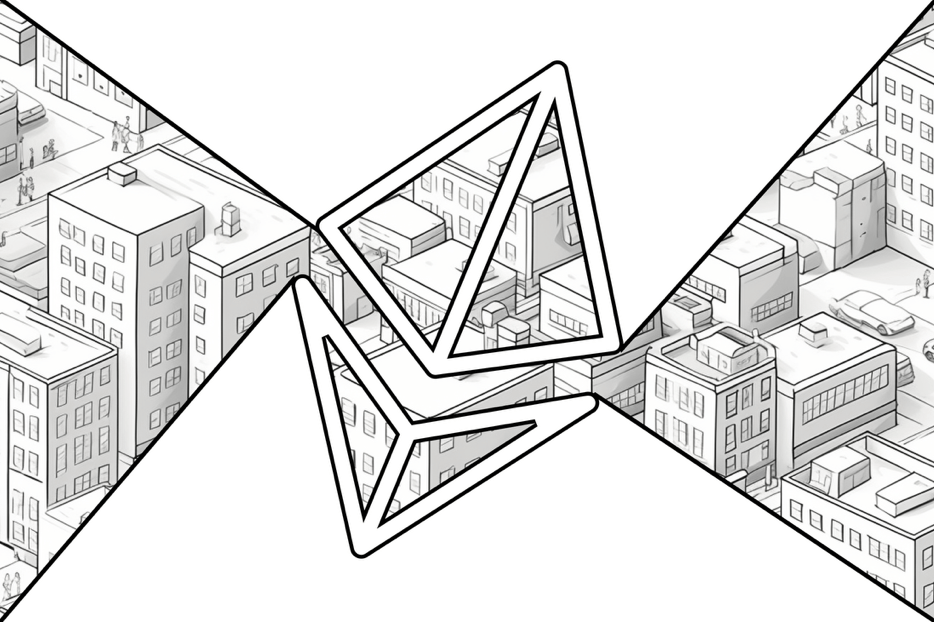Table of Contents
- Polkadot vs. Cosmos: Sharded Model vs. Horizontal Scalability
- Polkadot vs Cosmos: Architecture
- Polkadot vs Cosmos: Consensus
- Polkadot vs Cosmos: Staking Mechanics
- Polkadot vs Cosmos: Prioritizing Interoperability
Polkadot and Cosmos, two innovative blockchain protocols, share a common end goal but take distinct and fascinating paths to achieve it. Both protocols enable communication between different state machines through an interface, showcasing their unique and forward-thinking design.
The creation of Polkadot and Cosmos was driven by the recognition that the future of blockchain will require multiple interconnected chains, emphasizing the importance of interoperability over isolation.
Polkadot vs. Cosmos: Sharded Model vs. Horizontal Scalability
First, let’s look at how each protocol achieves scalability, starting with Polkadot. Polkadot uses a sharded model, with each shard having an abstract state transition function (STF). It uses Web Assembly (WASM) as a meta protocol. Shards on Polkadot are known as parachains. Whenever a parachain makes a state transition, it must submit a block, along with a state proof. This state proof is verified by Polkadot validators and then finalized for the Relay Chain, Polkadot’s primary chain. All Polkadot parachains submit and share their state with the entire system, meaning any re-organization of a single parachain would also require a re-organization of all parachains and the Relay Chain.
On the other hand, Cosmos uses horizontal scalability facilitated by app chains. The Cosmos Network comprises over 100 Inter Blockchain Communication Protocol (IBC)-connected chains. These include Osmosis, Celestia, dYdX, v4 Chain, Injective, and the Cosmos Hub. Each chain is responsible for securing the chain with a sufficiently staked and decentralized validator set. However, they can also leverage the shared security of the Cosmos Hub. Chains on Cosmos use the Inter Blockchain Communication Protocol. Chains on Cosmos do not share state, meaning the re-organization of a single chain will not lead to re-organizing other chains on the protocol.
Polkadot vs Cosmos: Architecture
The Relay Chain is the primary chain in the Polkadot ecosystem, and all validators in the Polkadot ecosystem are based on it. Parachains have collators who are responsible for constructing and proposing blocks to validators. They can submit a single parachain block for every Relay Chain block once every six seconds. Once a block is submitted, validators perform availability and validity checks before they commit it to the main chain.
Polkadot has a limited number of parachain slots. Parachain candidates must participate in an auction. If successful, they can reserve a parachain slot for up to two years.
Cosmos uses CometBFT as its consensus engine, Cosmos SDK as its VM, and the IBC protocol, which facilitates interoperability between chains.
Polkadot vs Cosmos: Consensus
Polkadot uses a hybrid consensus protocol combined with two sub-protocols: BABE (Blind Assignment for Blockchain Extension) and GRANDPA (GHOST-based Recursive Ancestor Deriving Prefix Agreement). BABE uses a verifiable random function (VRF) to assign slots to validators, guaranteeing each slot has an author. GRANDPA votes on chains instead of individual blocks.
Cosmos uses Tendermint to provide instant finality. Block production and block finalization are on the same path, allowing Cosmos to produce and finalize one block at a time.
Polkadot vs Cosmos: Staking Mechanics
The staking mechanics of Polkadot and Cosmos are quite different. Polkadot uses Nominated Proof-of-Stake (NPoS) to select validators using the sequential Phragmen algorithm. The validator set size is set through governance mechanisms. Stakers who do not wish to run validator nodes can nominate up to 16 validators.
Meanwhile, Cosmos uses a variant of Delegated Proof-of-Stake called Bonded Proof-of-Stake to choose validators. Stakers on Cosmos must bond funds and submit a delegate transaction for each validator and the number of tokens they wish to delegate. Cosmos plans to support up to 300 validators, while Polkadot plans to have 1000 validators.
Polkadot vs Cosmos: Prioritizing Interoperability
Polkadot is based on the principle that scalability and interoperability require a shared validation logic to create a trust-free environment. As more and more blockchains are created, their security must be cooperative instead of competitive. Polkadot provides shared security and validation across chains, allowing them to interact freely.
Meanwhile, Cosmos uses the IBC to connect chains with independent security guarantees. When data is sent between chains, the receiving chain must trust the chain sending the data. Each blockchain in the Cosmos ecosystem has its own security mechanisms. However, they also have the option of leveraging the security of the Cosmos Hub.
Disclaimer: This article is provided for informational purposes only. It is not offered or intended to be used as legal, tax, investment, financial, or other advice.
Investment Disclaimer










